What happens inside the CPU in the instruction execution cycle:

Most instructions executed by the CPU will result in in-order program flow
Example instruction that result in in-order program flow: add instruction
We will examine the instruction execution cycle when the next instruction execute is add R2, R0, R1 (add the values in R0 and R1 and store result in register R2)
Initial situation:
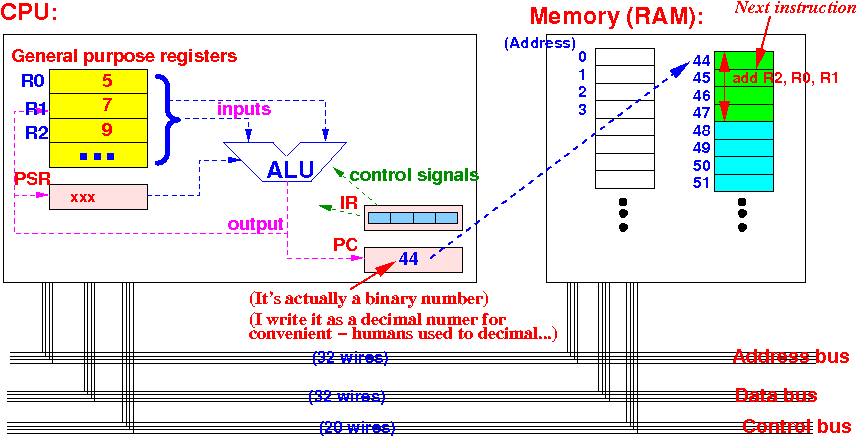
Comment:
PC = 44
(see figure)
So the next instruction
is located at
memory address 44
We assume that computer instructions are
4 bytes long
The picture shows that the
4 bytes at memory location 44
contains the instruction
add R2, R0, R1
How the CPU completes Phase 1, the instruction fetch step:
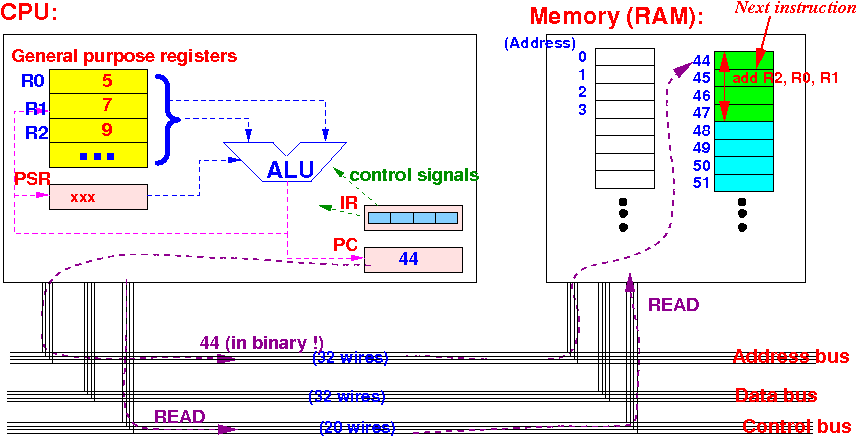
The CPU sends:
A Read command on the
control bus
The value in the PC (= 44) on the
address bus
These signals will tell the memory to return the data in its location 44
How the CPU completes Phase 1, the instruction fetch step:
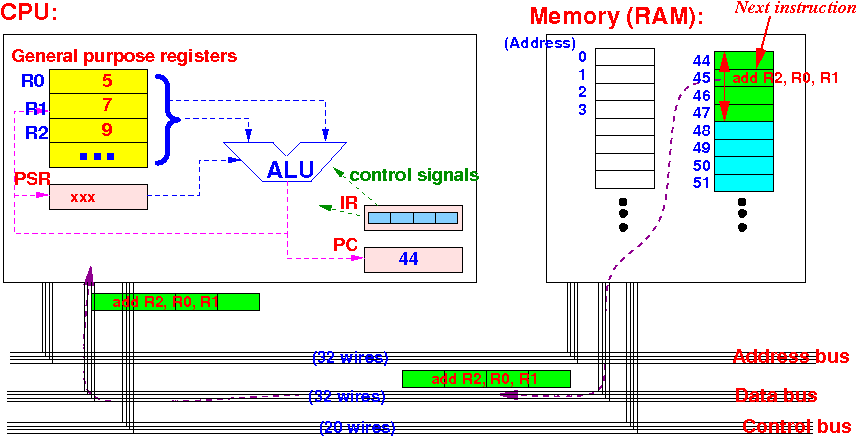
In response,
the memory will
send the data stored in location 44
onto the databus
* This data is
the next instruction that
the CPU wants to
execute !!!
How the CPU completes Phase 1, the instruction fetch step:
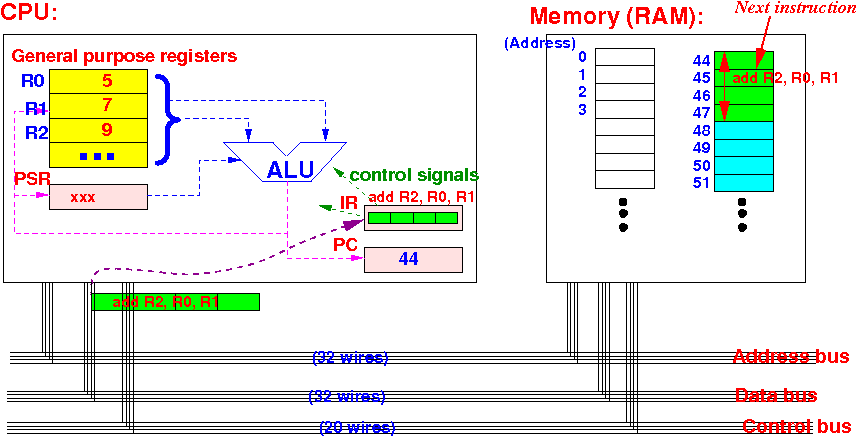
The CPU will capture the data and store it in the Instruction Register
How the CPU completes Phase 1, the instruction fetch step:
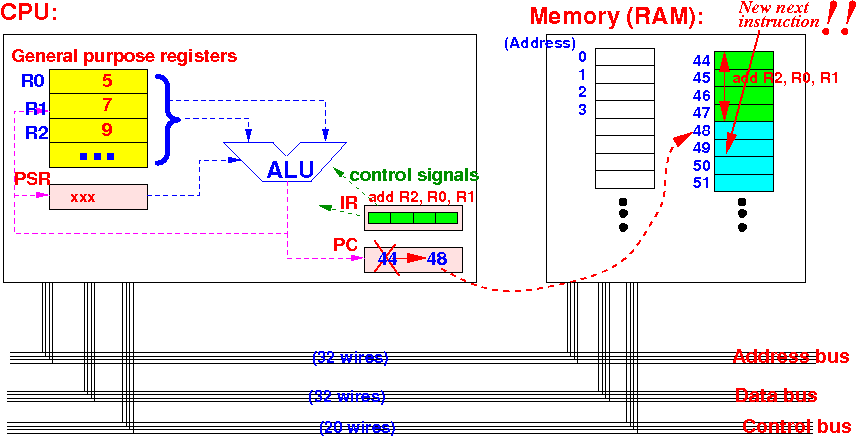
Finally: the CPU will increase the PC by 4 (instruction size) to point to the (new) next instruction
Situation after Phase 1, the instruction fetch step:
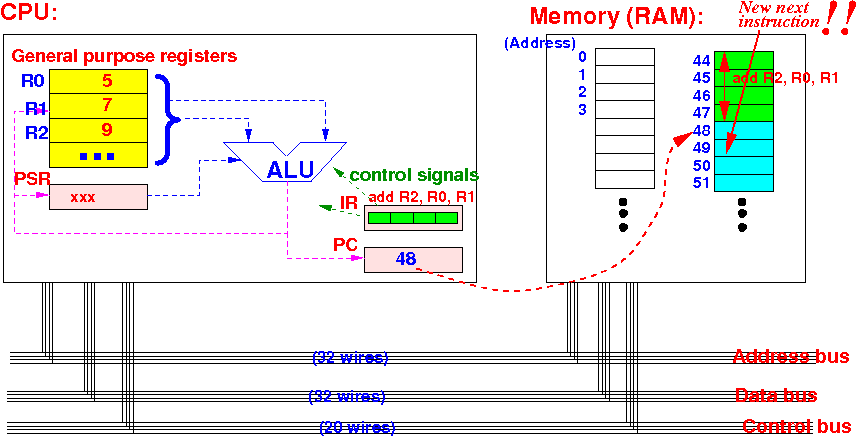
(1) The CPU has
fetched the
current instruction into the
Instruction Register (IR)
* The remainder of the
instruction execution cycle
are used to
process the
current instruction !!!
(2) The PC has been
update and
now points to
the next instruction of the
next instruction execution cycle
* This implements the
(default) in order program flow
execution ordering !!!
How the CPU completes Phase 2, the instruction decode step:

This material is discussed in CS355 - please take that course if you want to know the details...
All that you need to know
for CS255 is:
The CPU now know
what operation it needs to
perform and
with
which operands
How the CPU completes Phase 3, the operand fetch step:

The CPU sends control signals to the specific registers and fetch their values to the input of the ALU
How the CPU completes Phase 4, the instruction execution step:
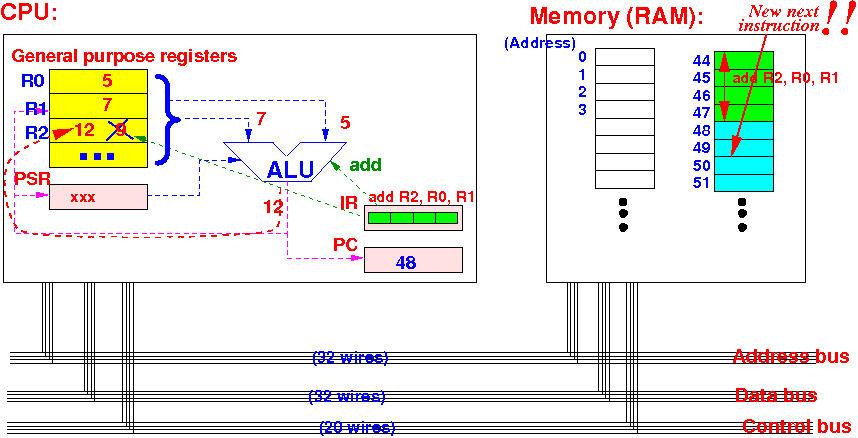
The CPU instructs the ALU to the add the input values and then store the result in the specified (destination) register (R2)
Situation at the end of Phase 4, the instruction execution step:
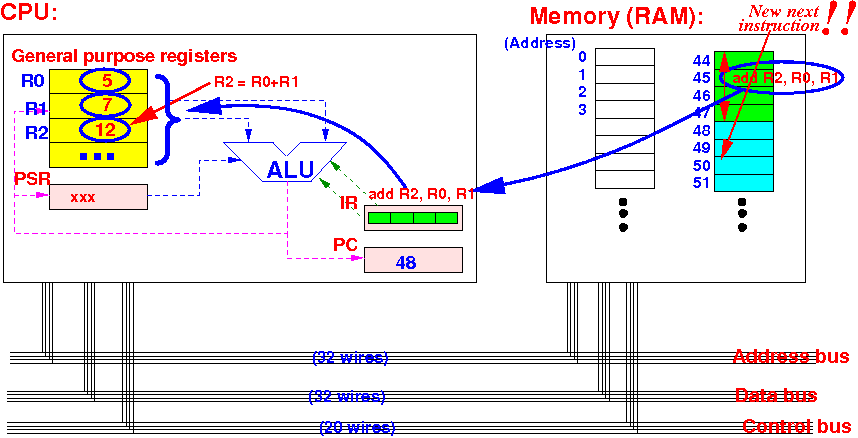
The CPU has
finished executing
the
instruction
add R2, R0, R1 !!!
(The CPU has added the values in R0 and R1; and stored the
result in register R2 !!!)
The instruction execution cycle has
ended !!
(And a new
instruction execution cycle will
begin immediately !!)
Initial situation of the new instruction execution cycle:

Comment:
PC = 48
(see figure)
So the next instruction
is located at
memory address 48
The CPU will
execute the
"new" next instruction
in the new instruction
execution cycle !!!
And this sequential instruction execution will happen repeatedly unless the CPU fetches an instruction that causes an out-of-order program flow